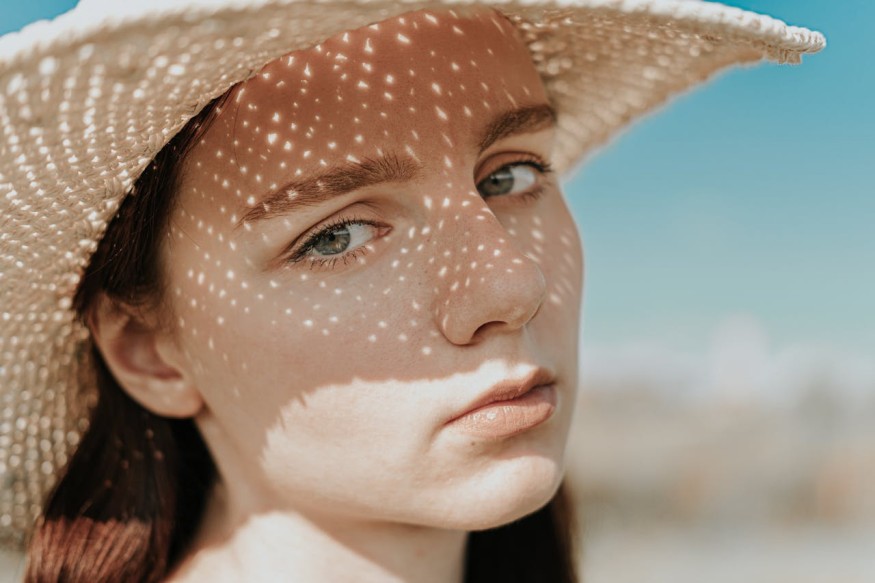
The sun can damage more than just the skin. After as little as 15 minutes, it can harm the eyes, too. That's especially apparent in countries like Australia, which gets more intense sunlight than most other countries.
As part of the Southern Hemisphere, it's positioned closer to the sun and thus receives more UV in the summer. That's not to mention that the air in Australia is generally cleaner. Although that means it's easier to breathe, the lack of pollutants and other particles means there's less in the air to block the amount of UV radiation that reaches the ground. As a result, Australians are more at risk of developing UV-related eye conditions.
In particular, cases of ocular melanoma—a kind of skin cancer that occurs in the eye—are rising, and as many as 400 Australians can get diagnosed with it in a single year. Meanwhile, over 50 people in the country, for example, are diagnosed with UV-related cataracts daily. That's why eye care professionals are urging Australians to practice better sun protection for their eyes by:
Sliding on sunglasses
"Slip, slop, slap" is a huge and well-known campaign in Australia meant to increase public awareness of the importance of sun protection. What many forget, however, is that the slogan was updated to go beyond reminders to shield one's skin. It's now "slip, slop, slap, seek, slide"—with that last bit particularly encouraging Australians to slide on some sunglasses. These are considered the eyes' first defense against the sun's UV rays, which is why they shouldn't be bought purely on the basis of aesthetics and fit. Truly effective sunglasses block 100% UVA and UVB rays and are labeled as such or with the term "UV400." One can also get them with specialized lenses based on what they need, such as Oakley's polarized lenses to block the glare of Australia's intense sun and prescription lenses on models from brands like Versace to provide both vision correction and UV protection. Given their efficacy, Dr Ashish Agar of the Australian Society of Ophthalmologists thus recommends that Australians remember that the "slide" part of the slogan pertains to wearing sunglasses.
Wearing wide-brimmed hats
Slapping on a sun hat is another tip that's well-ingrained into Australian sun protection culture, but many only do so to protect the skin. However, a wide-brimmed hat can also be crucial for protecting the eyes. Though sunglasses can block the majority of the UV rays one is exposed to, hats will provide additional protection when the sun is shining directly overhead. Wide-brimmed variants will be particularly more effective than the likes of baseball caps, as their improved coverage ensures better shielding from more angles. Brands like Solbari also pay attention to fabric, only selling models that use materials approved by the government to have a UPF rating of 50. Considering these factors when purchasing a hat will better ensure sun protection for both the eyes and skin, which is why ARPANSA only considers hats with wide brims to be sun hats.
Getting regular exams
Finally, the rise in cases of UV-related eye cases in the country has created a larger call for regular eye checks. Similar to assessing moles to catch skin cancer early, frequent exams can help spot major developments in the eye and head off any major issues. That's because comprehensive tests look at more than just 20/20 vision to assess every aspect of eye health fully. It's thus capable of detecting health issues early—including eye-related conditions, diabetes, and even cognitive diseases like Alzheimer's. According to ophthalmologist and former Australian Medical Association president Dr Bill Glasson, getting such comprehensive exams more regularly can thus make or break the difference between keeping or losing one's eye, especially when it comes to more serious conditions like ocular melanoma. It's thus recommended that screening be done at least once a year. Some researchers are even going as far as developing AI-powered assessment tools people can try on their smartphones as a form of preventative care. These can be especially handy for tracking long-term eye changes amid limited access to eye exams. The UV-related eye damage they detect can also serve as early indicators of skin cancer, helping users be even more proactive with their health.
© 2025 NatureWorldNews.com All rights reserved. Do not reproduce without permission.





